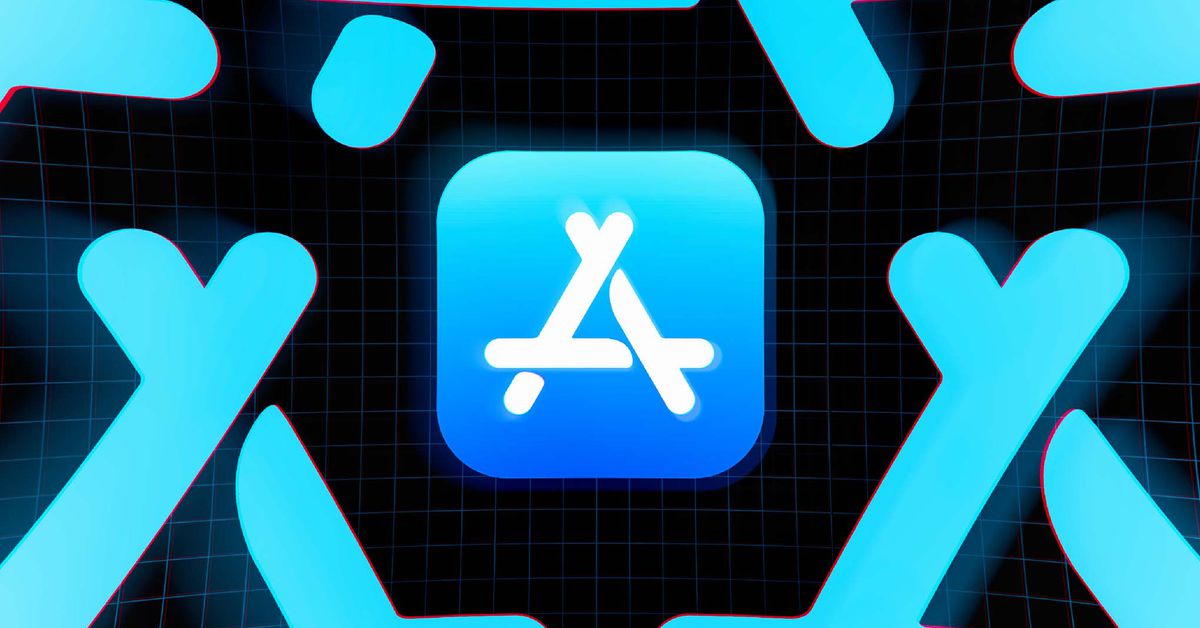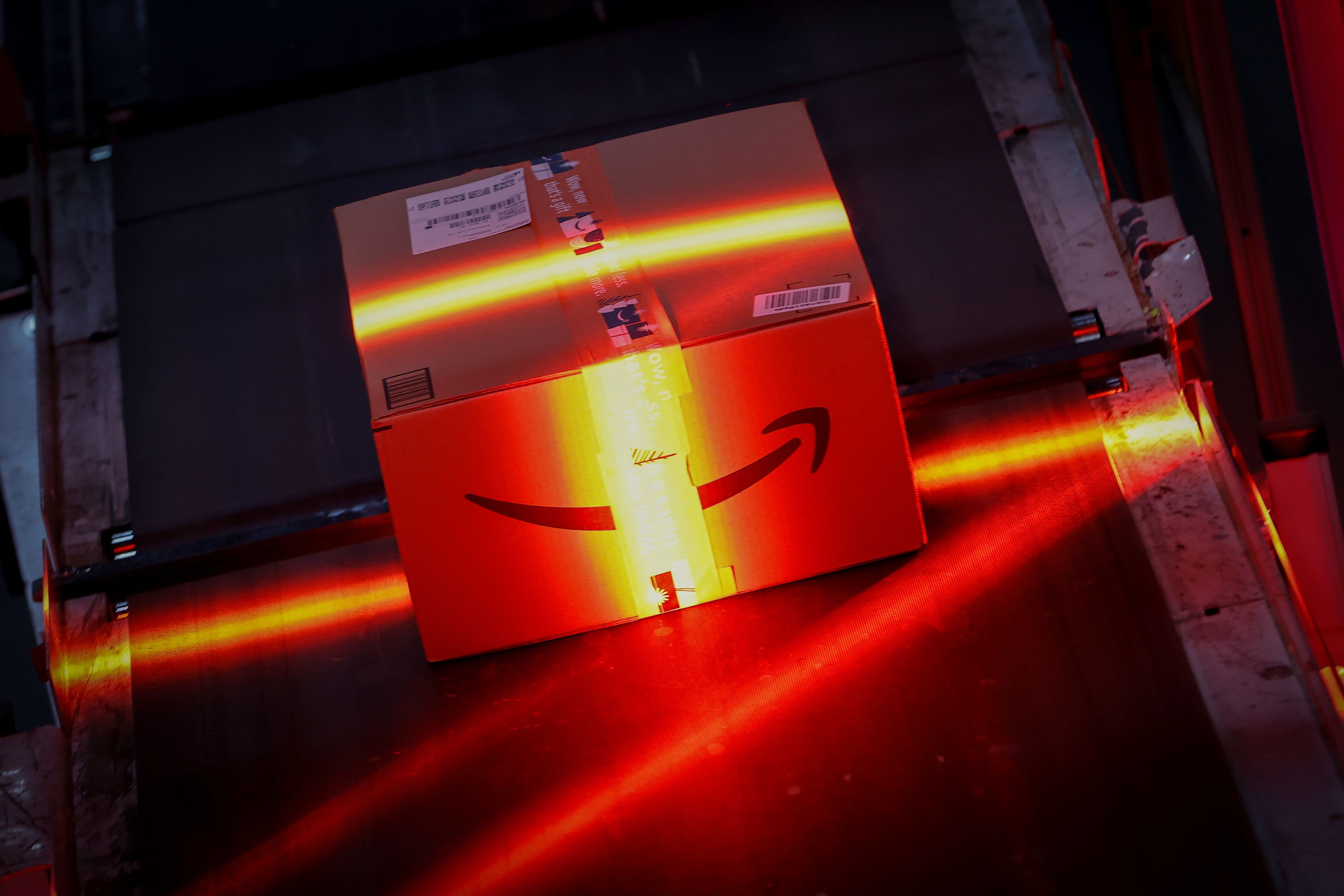Razer Blade 17 review: Pleasant, but not perfect
The updated Razer Blade 17 features the latest components and some slight tweaks to the design. Is that enough?


Razer Blade 17
MSRP $3,200.00
Pros
Great design and build quality Powerful for gaming Extensive ports Excellent, colorful screen Surface stays relatively coolCons
Throttled CPU performance Poor battery life Very expensivePortability and sleekness have become calling cards for the Razer Blade gaming laptops. So, is there still a place for the largest in the lineup, the Razer Blade 17?
The latest model packs in the latest components, of course – the 12th-gen Intel processors and RTX 3080 Ti graphics cards. But it also makes some small tweaks that sharpen the overall design. It’ll likely never be the most popular Blade in the lineup, but there’s still reason to choose the Razer Blade 17 over any number of the best gaming laptops out there.
Design

The Razer Blade design hasn’t had a major overhaul in many years. Instead, the formula gets smaller tweaks and upgrades each year that keep it up to date with the latest trends. But put side by side with a Razer Blade 17 of a few years back, you likely won’t notice the difference.
Unlike many of the other premium gaming laptop brands, the Razer Blade’s aesthetic has remained unchanged — primarily because it was already so many years ahead of other designs. The minimalist, all-black aesthetic paved the way for lots of other gaming laptops to adopt similar stylings, such as the HP Omen 16 or ROG Zephyrus G15.
Razer’s look still has a distinctly premium edge to it, though. The single hunk of machined aluminum is without a real competitor in other gaming laptops. The Blade has always wanted to be the MacBook of the gaming world — even if other brands have caught up.

The Blade 17 still uses a 16:9 aspect ratio, which isn’t a problem for a gaming laptop necessarily, especially one of this size. The only downside is the chunky bottom bezel here. Again, it’s less egregious than on the smaller models, but I wouldn’t be surprised if Razer eventually moved to 16:10 like the Lenovo Legion 5 Pro at some point in the future.
The only visible change to the Razer Blade 17 is the new speaker grill on the keyboard deck. They’re more subtle now, and the power button has been moved to the top right of the keyboard. It’s a change that also comes to the new 15-inch model, but I take it as a positive.
But there’s no getting around the size of the Razer Blade 17 — and if you’re considering it as your next purchase, you probably know that already. It weighs 6.1 pounds, which is rather heavy. The sizable rubber feet on the bottom also lift it up off the table, adding to the already thick 0.78-inch thickness. It goes against much of what the Razer Blade brand has always stood for, but with the entrance of the thicker MacBook Pro last year, the pressure’s off to make the absolute thinnest laptop possible.
And yes, despite the presence of some kind of undetectable anti-fingerprint coating, the Razer Blade 17 remains a fingerprint magnet. Less so than in previous generations, but certainly still an annoyance to keep clean.
Keyboard and touchpad

The Razer Blade 17’s keyboard is fantastic. They’ve tightened up the switches for a snappier and more satisfying typing experience that is a real step up from previous models. Of course, Razer’s RGB game is also as good as it gets, with per-key lighting with tons of customization in both color patterns and brightness color. Like in previous models, the function key even lights up the function row. I love this keyboard.
I have the complete opposite reaction to the touchpad. It’s nice and large, which looks great. But the palm rejection here is awful. My experience of using this laptop is full of unintentional clicks and random cursor twitches. It’s extremely frustrating.
When actually using the touchpad, it tracks well and has a smooth glass surface for your fingers to glide across. The click mechanism is heavier and loud than I prefer, requiring too much force to register a press. It’s a great example of why Razer should adopt a haptic feedback trackpad like Apple, Lenovo, Microsoft, and Dell. This would allow for customization of how strong the feedback is.
Gaming laptops tend to ignore the quality of touchpads, so Razer is ahead of many others. But at the prices Razer charges, and for the quality the brand strives for, this is something that needs to be fixed.
Ports
The Razer Blade 17 includes a wealth of ports, all located on the sidewalls of the chassis. They include HDMI 2.1, a USB-A 3.2, a Thunderbolt 4, and a full-sized SD card slot. On the left, you’ll find the L-shaped power adapter, a 2.5GbE Ethernet jack, two more USB-A ports, an additional USB-C Thunderbolt 4 port, and a headphone jack.
The USB-C port can charge, but it’s limited to just 54 watts.
This is now the only version of the Razer Blade to include an Ethernet port for hard-wired connections. That’s a nice selling point, as is the SD card slot for those who might want to upload photos directly from a camera.
Camera and security
The Razer Blade 17 includes a 1080p webcam, upgraded from the 720p resolution module used in the previous generation. Razer did this without increasing the size of the top bezel or thickness of the lid, which is often the excuse made by laptop manufacturers. The increased resolution is nice and it’s certainly an improvement over previous models. That doesn’t, however, mean this is necessarily a “good” camera. I’m sure the sensor they’ve included is fine, but the image processing isn’t up to snuff. Images often appear darker and granier than they should, and it doesn’t do a great job highlighting skin tones and faces.
Fortunately, the Razer Blade 17 does include an IR camera for Windows Hello facial recognition, which many gaming laptops tend to leave out.
Display and speakers

The Razer Blade 17 has a large, 17.3-inch screen with a sharp 2560 x 1440 resolution. Like most gaming laptops, it has a matte finish to deflect reflections and glares. While good for games, the matte layer reduces the clarity and perceived contrast of the images. The 890-1 contrast ratio at 100% brightness already isn’t the best. That makes it less ideal for those wanting to do creative work on the Razer Blade.
Fortunately, it means you won’t be too bothered by the lack of brightness of the screen. It maxes out at 313 nits, which matches other Razer Blade laptops, but comes in dimmer than other gaming laptops like the Legion 5 Pro and HP Victus 16. It’s over 300 nits though and is bright enough for most settings.
Like the 14-inch model, the Razer Blade 17 continues its streak of having excellent color saturation and accuracy. Outside of expensive OLED 4K models, this is as good as gaming laptop screens get, hitting 100% sRGB, 90% Adobe RGB, and a Delta-E of 0.84. That is some excellent calibration on Razer’s part.
The Razer Blade 17 also has a super-fast 240Hz refresh rate, which is as fast as you’ll find on screens this sharp. You also have an option for a 4K 144Hz screen or a 1080p 360Hz screen — though I really think this QHD 240Hz model is the balanced option that most people should opt for.
As for the speakers, they’re still nothing to write at home about. The sleeker, laser-cut speaker grille might convince you you’re getting better audio, as will the THX sticker on the palm rests. Unfortunately, these speakers still don’t impress, and the spatial audio feature feels a bit gimmicky. Razer even says it included four subwoofers this time around to enhance the bass, but it’s still thoroughly lacking, both while listening to music and while gaming.
Performance
The Razer Blade 17 features the latest 12th-gen Intel Core i7-12800H, a 14-core chip split between six performance cores and eight efficiency cores. These powerful chips represent a major comeback for Intel. The extra cores have vastly improved multi-core performance without skipping a beat on the single-core front either.
| Geekbench (single/multi) | Handbrake (seconds) |
Cinebench R23 (single/multi) | PCMark 10 Complete | |
| Razer Blade 17 (Core i7-12800H) | 1808/11843 | 73 | 1697/13218 | 5760 |
| MSI GE76 Raider (Core i9-12900HK) | 1855/13428 | 72 | 1872/16388 | 5,682 |
| Lenovo Legion 5 Pro (Ryzen 7 5800H) | 1460/7227 | 99 | 1430/11195 | n/a |
| Razer Blade 14 (Ryzen 9 5900HX) | 1448/7243 | 101 | 1,389/3,941 | 4,728 |
| Gigabyte Aero 16 (Core i7-12900HK) | 1915/13482 | 73 | 1915/12,969 | 686 |
Unfortunately, the Razer Blade 17 puts some restraints on the power of this chip. You don’t need to put this thing in a stress test to make the performance cores throttle. Internal CPU temperatures often spiked up to the max of 100 degrees Celsius, throttling performance to keep temperatures within acceptable range. Razer Blades have often struggled to keep temperatures low enough due to just how thin the chassis of the laptop is.
CPU throttling means you aren’t getting the best possible performance out of the processor compared to better-cooled systems. Full price, less performance. That’s nothing new in thin and light gaming laptops, though. This is one of the first few laptops using the 12th-gen H-series chips, but it’s already the slowest performer in Cinebench R23 among the laptops we’ve tested so far, including the Gigabyte Aero 16, MSI Creator Z17, and MSI GE76 Raider. Now, will a 5% drop in processor performance make a noticeable difference in actual use? In most cases, probably not.
But the thermals did present some performance limitations in certain workflows and applications. The Blade 17 isn’t quite as good at editing video in Premiere as comparable laptops. Don’t get me wrong — Intel’s 12th-gen H-series chips have made huge strides to catch up to Apple, and a lot of that improvement shows up in the Razer Blade 17.
As tested in Pugetbench, timeline exports are 26% faster than the M1 Max MacBook Pro, largely thanks to the more powerful GPU. The problem? It’s up to 28% slower in video playback in Premiere than other 12th-gen machines we’ve tested, such as the MSI GE76 Raider and Gigabyte Aero 16. That makes it a whopping 40% slower in video playback than the M1 Max MacBook Pro. Oof.

Again, in bursty tasks like video encoding in Handbrake, the Razer Blade 17 and its 12800H are blazing fast. It’s 60% faster at the exact same test than the previous generation Blade 17 I reviewed, which was two generations of Intel chips back.
So no, it won’t be among the most powerful gaming laptops of this generation, especially not in terms of CPU performance. But can it handle some content creation and heavier applications? You bet.
While content creation is certainly a side benefit of owning a Razer Blade 17, gaming is its main prerogative — and there, the thermal restraints aren’t quite as obvious.
Gaming performance

The Razer Blade 17 features the latest RTX 3080 Ti Max-Q graphics, which is what my review unit came with. The system is capable of delivering 150 watts of power to the GPU, and can even add an extra 15 watts thanks to Dynamic Boost. You can also configure the laptop with the RTX 3060 or RTX 3070 Ti. The system, regardless of configuration, also includes Nvidia features like Resizable BAR and CPU Optimizer to balance power between the components to result in the best possible gaming performance. However, that doesn’t mean all laptops with an RTX 3080 Ti are made equal.
The Razer Blade 17 will likely fall on the weaker end of the spectrum — that is, if they’re gaming laptops. Other similarly-equipped laptops we’ve reviewed like the Gigabyte Aero 16 don’t perform as well — by as much as 22% in 3DMark Time Spy. In that benchmark, the Razer Blade 17 even edges out the larger and chunkier MSI GE76 Raider. I was surprised by that, but it didn’t end up holding up to the MSI machine by as much in actual games.
| Assassin’s Creed Valhalla (1080p Ultra High) | Civilization VI (1080p Ultra) | Fortnite (1080p Epic) | 3DMark Time Spy | |
| Razer Blade 17 (RTX 3080 Ti) | 83 fps | 193 fps | 104 fps | 12643 |
| MSI GE76 Raider (RTX 3080 Ti) | 93 fps | 169 fps | 121 fps | 12421 |
| Lenovo Legion 5 Pro (RTX 3070) | 61 fps | 114 fps | 101 fps | 9175 |
| Razer Blade 14 (RTX 3070) | 60 fps | 111 fps | 96 fps | 8605 |
| Gigabyte Aero 16 (RTX 3080 Ti) | n/a | 156 fps | n/a | 9833 |
In Assassin’s Creed Valhalla, for example, the MSI GE76 Raider is 11% faster than the Razer Blade 17 in 1080p Ultra High. The Razer Blade 17 still hits 69 fps (frames per second) at 1440p Ultra High, which is impressive historically. It’s similar in another heavy title, Red Dead Redemption 2, where the Razer Blade 17 hits 73 fps at 1440p Ultra High.
Interestingly, Civilization VI is the one game the Razer Blade 17 stomps on the competition. It’s 12% faster than the MSI GE76 Raider and 19% faster than the Gigabyte Aero 16. It’s also the only game I tested that can put to use the super-fast refresh rate in 1440p, hitting 162 fps in Ultra settings.

You likely won’t buy the Razer Blade 17 with the RTX 3080 Ti and complain about the gaming performance. It’s doing things in 1440p that people have been waiting a long time to do. But clearly, there will be (and already are) much more powerful gaming laptops to come out in 2022 with similar components inside. That will be hard for some people to get over, especially when you consider the price and size of the Razer Blade 17.
The laptop does do a good job of not letting the chassis get too hot or the fans too loud. It handles thermals from that perspective better than the Razer Blade 14 or 15, and that’s certainly a positive. You can thank the larger size and extra vents along the lid for that.
Battery life
The 2022 Razer Blade 17 gets awful battery life. It’s bad for a gaming laptop, and it’s even worse than previous versions of this laptop. Intel’s 12th-gen chips are likely to blame, which have been showing lower battery life results than previous generations.
The Razer Blade 17, with its 82 watt-hour battery, only lasted three hours and 10 minutes in light web browsing. That’s pitiful. That’s over five hours less than the AMD-powered Razer Blade 14 and even a half-hour less than the large MSI GE76 Raider, which had a 12th-gen Core i9 chip and the same RTX 3080 Ti. It’s in line with the Gigabyte Aero 16, though.
In an even lighter test like local video playback, the Blade 17 only lasted a half-hour longer, which means in almost no circumstance can you expect more than four hours away from the wall.
Configurations and price
Razer offers six different configurations on its online storefront. The options are all packaged together though, so the slightly faster Core i7-12900H is paired with the 4K 144Hz screen and 32GB of RAM. That option will cost you $4,300, and it’s the only 4K option available, presumably for more of a content creation-focused buyer.
There are also two configurations available in the 1080p 360Hz category, one with the RTX 3070 Ti and one with the 3080 Ti. A 17-inch laptop with a 1080p screen isn’t ideal as you’ll be able to see the pixels, and with GPUs this powerful, most gamers will prefer the higher resolution that a 1440p screen can offer. The 1080p 360Hz and 1440p 240Hz configurations are priced identically, both starting at $3,200 for the RTX 3070 Ti model, which comes with 16GB of dual-channel RAM.
My particular review unit cost $4,000, thanks to the addition of the RTX 3080 Ti and 32GB of RAM. Either of the 1440p models would be the options I’d recommend if you’re looking to buy the Razer Blade 17.
All Razer Blade 17 configurations come with 1TB of fast SSD storage, which is fantastic. That doesn’t change the fact that the Razer Blade 17 remains one of the most expensive gaming laptops you can buy.
Our take
There’s plenty to like about the Razer Blade 17, but it continues to be a niche product in the lineup. On one hand, it’s the best-performing laptop in Razer’s lineup from a fan noise and surface temperature standpoint. On the other hand, it’s a very large laptop, the poor battery life is a problem, and the touchpad needs to be fixed.
Are there any alternatives?
Gaming laptops are just now starting to roll out updates to the latest 12th-gen Intel processors and RTX 3080 Ti graphics.
Should you buy it?
It’s a good buy, but no gaming laptop is without its issues. This one throttles CPU performance, is quite expensive, and has a troublesome touchpad.

 ShanonG
ShanonG 




























![Snapchat Shares Trend Insights for Marketers to Tap Into This Summer [Infographic]](https://imgproxy.divecdn.com/7LB56F586EcY82vl5r47Ba6f7RdKcHkNelnSgSe8Umc/g:ce/rs:fit:770:435/Z3M6Ly9kaXZlc2l0ZS1zdG9yYWdlL2RpdmVpbWFnZS9zbmFwX2tzYTIucG5n.webp)





